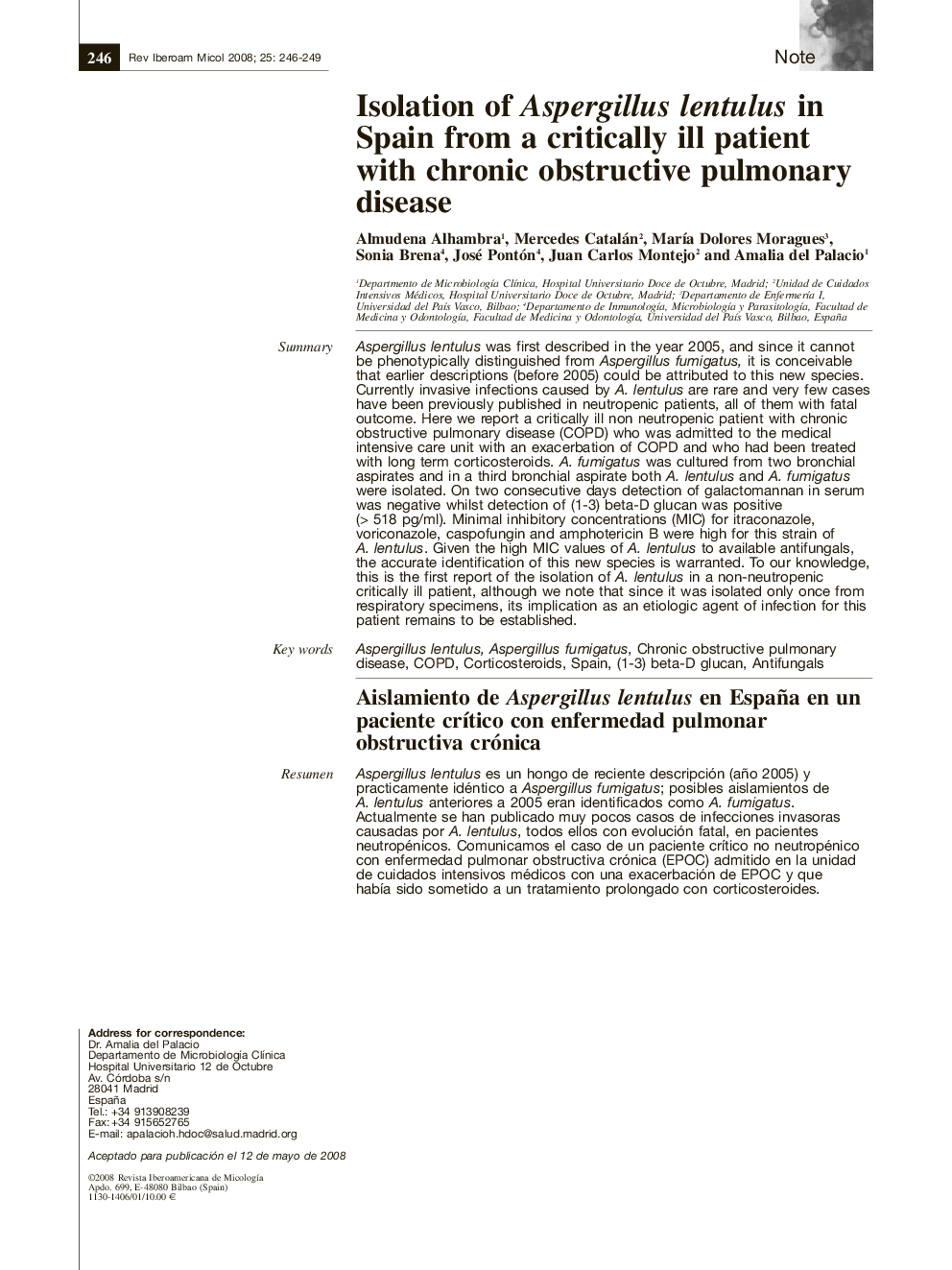| Article ID | Journal | Published Year | Pages | File Type |
|---|---|---|---|---|
| 3419003 | Revista Iberoamericana de Micología | 2008 | 4 Pages |
ResumenAspergillus lentulus es un hongo de reciente descripción (año 2005) y practicamente idéntico a Aspergillus fumigatus; posibles aislamientos de A. lentulus anteriores a 2005 eran identificados como A. fumigatus. Actualmente se han publicado muy pocos casos de infecciones invasoras causadas por A. lentulus, todos ellos con evolución fatal, en pacientes neutropénicos. Comunicamos el caso de un paciente crítico no neutropénico con enfermedad pulmonar obstructiva crónica (EPOC) admitido en la unidad de cuidados intensivos médicos con una exacerbación de EPOC y que había sido sometido a un tratamiento prolongado con corticosteroides.Se aisló A. fumigatus en dos aspirados bronquiales, y A. lentulus y A. fumigatus de un tercero. En dos días consecutivos la detección de galactomanano en suero fue negativa, mientras que la detección de (1-3) beta-D glucano fue positiva (>518 pg/ml). Los valores de concentración mínima inhibitoria (CMI) obtenidos con el itraconazol, el voriconazol, la caspofungina y la anfotericina B fueron altos para A. lentulus. Dado lo elevado de estos valores en A. lentulus, es necesaria la identificación precisa de esta nueva especie en aislamientos clínicos. A nuestro entender, este es el primer aislamiento de A. lentulus en un paciente crítico no-neutropénico, aunque como su aislamiento se realizó una sola vez de secreciones respiratorias (dada la dificultad de la obtención de biopsias en este enfermo por su situación comprometida), su implicación como agente etiológico de infección es dudosa en este enfermo.
SummaryAspergillus lentulus was first described in the year 2005, and since it cannot be phenotypically distinguished from Aspergillus fumigatus, it is conceivable that earlier descriptions (before 2005) could be attributed to this new species. Currently invasive infections caused by A. lentulus are rare and very few cases have been previously published in neutropenic patients, all of them with fatal outcome. Here we report a critically ill non neutropenic patient with chronic obstructive pulmonary disease (COPD) who was admitted to the medical intensive care unit with an exacerbation of COPD and who had been treated with long term corticosteroids. A. fumigatus was cultured from two bronchial aspirates and in a third bronchial aspirate both A. lentulus and A. fumigatus were isolated. On two consecutive days detection of galactomannan in serum was negative whilst detection of (1-3) beta-D glucan was positive (> 518 pg/ml). Minimal inhibitory concentrations (MIC) for itraconazole, voriconazole, caspofungin and amphotericin B were high for this strain of A. lentulus. Given the high MIC values of A. lentulus to available antifungals, the accurate identification of this new species is warranted. To our knowledge, this is the first report of the isolation of A. lentulus in a non-neutropenic critically ill patient, although we note that since it was isolated only once from respiratory specimens, its implication as an etiologic agent of infection for this patient remains to be established.
